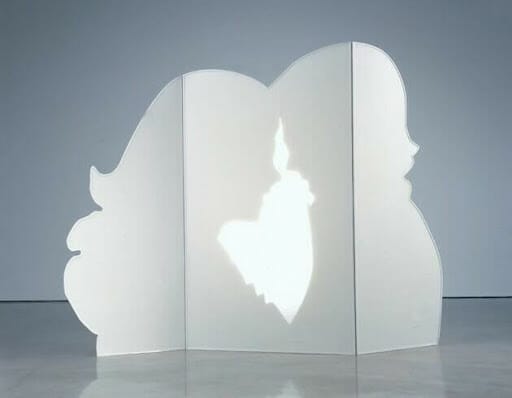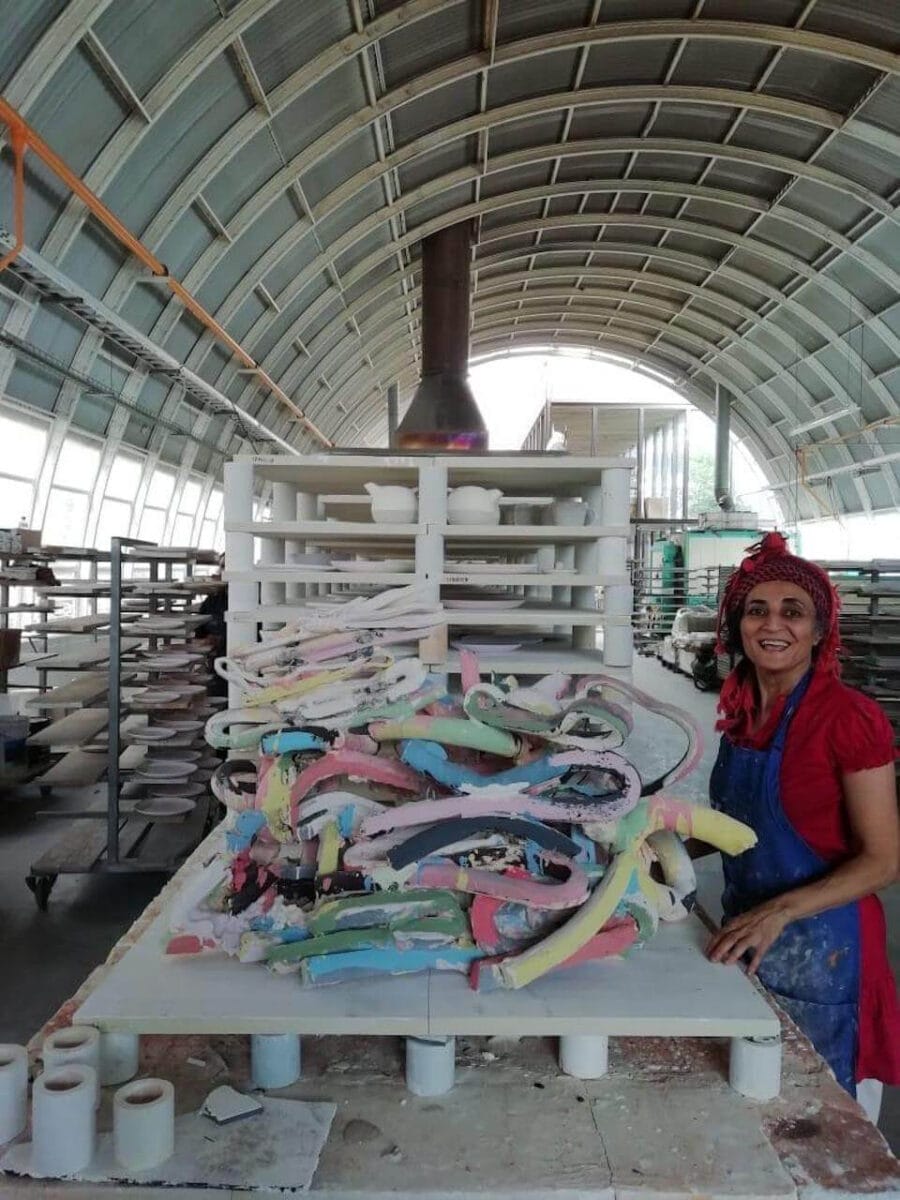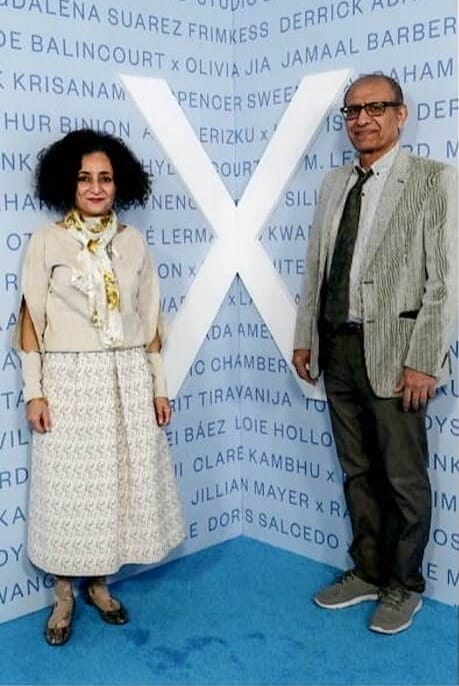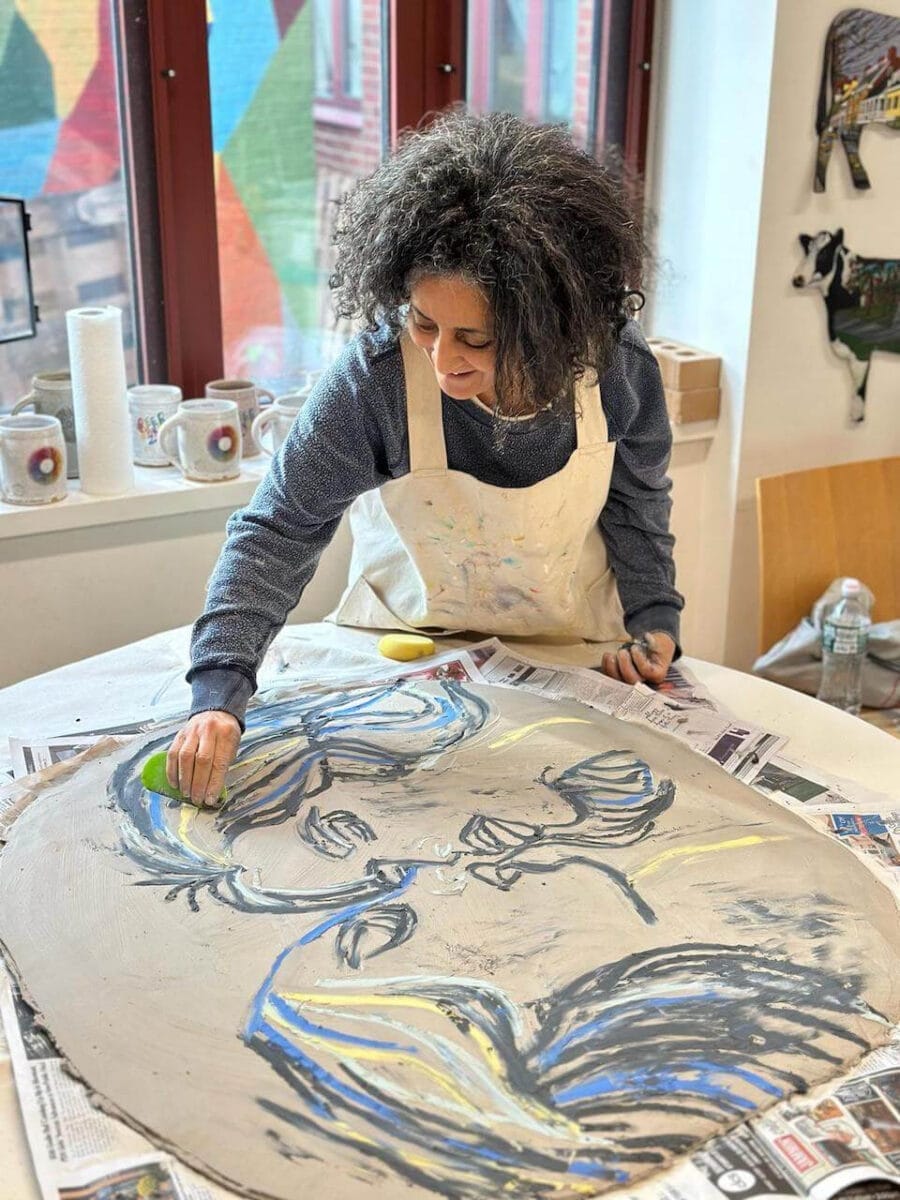The shadowy outline of the two backlight figures gives them an air of mystery: these lovers’ stories are as opaque as their silhouettes. The functional title of the artwork, The Screen, does not give their story away either and leaves the viewer wondering who are these two ? Are they leaning in for a kiss? Are they exchanging confidences? Or — as we cannot see their faces — could something else entirely be going on?
The posture and profiles of the figures on The Screen recall lifestyle images used by Ghada Amer in her work in the early 1990s and may provide some clues. In 1991 Ghada Amer began creating works that appeared to be line drawings of women or couples, but were actually neatly stitched embroidery on canvases. The act of declaring these works paintings, despite the fact they were created with thread instead of oils or acrylic paints was the start of what Ghada Amer has called her “painting manifesto” and the development of her own feminine language of painting (1).
Ghada Amer’s depictions of domestic serenity would nonetheless come to an abrupt end. In a conversation with Maura Reilly, Ghada Amer spoke about her decision to shift away from domestic imagery and to introduce pornography to her work in 1993. In so doing Ghada Amer sought to “represent women using embroidery, a Woman’s tool, but to show Woman, the universal woman, as an activated subject empowered by her own pleasure” (2).
Enter The Screen, created in 1992. Can this work be interpreted as Ghada Amer’s “curtain call” for her depictions of domestic subjects ? The fading interest in depicting domesticity is paralleled by the choice to create faded figures in The Screen. Instead of embroidery, Ghada Amer turns to other techniques to obscure the faces of the couple featured in The Screen. The subjects are partially created from cutouts – the shape of the figures’ hair, heads, and backs are cut out from sheets of acrylic that when joined together, form a three part triptych. Their profiles, on the other hand, emerge as silhouettes: backlit and outlined in shadow, they appear when light shines through the screen.
The opaque nature of The Screen might be interpreted as a turning point in Ghada Amer’s work. Where other pieces from this period illustrated domestic scenes of women cheerfully doing chores, or couples laughing and leaning in to share a smile or a kiss, the figures on The Screen are featureless. With their traits hidden from view, the figures in Ghada Amer’s screen are mysterious, the original photograph from a domestic magazine is long gone and the truth about their situation is obscured.
The negative space between the figures also leaves room for the viewer to see things that may not have been in the original magazine image. The figures, their features obscured, are given an air of romantic mystery, but what of the lit-up space between them? Focusing on the space between the figures on the Screen can create an entirely new image, that of a flaming or falling heart. Looking closely, the spaces between the figures’ noses and the woman’s chin resemble the two curves of the top of a heart, and the V shape where their bodies meet is also the meeting point for a heart’s point. Positioned in the very center of the screen, the heart, whose jagged edges make it seem like it is melting, or in flames, is accentuated by the painterly acrylic that dripped as it dried, prefiguring the threaded drips of Ghada Amer’s later embroidered paintings.
The imagery of The Screen and its use of space and shadow positions it as a transitory piece between Ghada Amer’s artistic periods. The Screen, as an exercise in abstraction, heralds Ghada Amer’s commitment to technical experimentation that continues to this day.
References:(1, 2) Maura Reilly, “D as in Drips: A Conversation with Ghada Amer,” Ghada Amer, exhibition catalogue (New York: Cheim & Reid, 2010).






